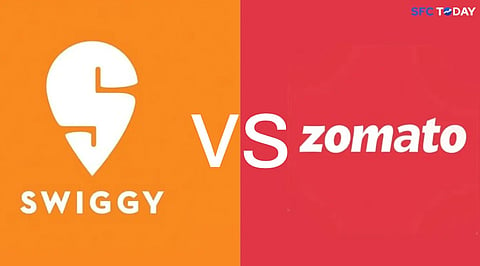

India's food delivery sector is witnessing a significant divergence in the financial trajectories of its two major players: Zomato (now operating under the parent company Eternal Ltd) and Swiggy. While both companies have experienced substantial revenue growth, their approaches to achieving profitability differ markedly, influenced by strategic decisions, operational efficiencies, and market dynamics.
Zomato (Eternal Ltd): In the fourth quarter of FY25, Zomato reported a consolidated net profit of ₹39 crore, a 78% decline from the ₹175 crore profit in the same quarter the previous year. Despite this drop, the company achieved a 64% year-on-year increase in revenue, reaching ₹5,833 crore. For the full fiscal year, Zomato's profit stood at ₹527 crore, marking a 50% increase from the previous year's ₹351 crore.
Swiggy: In contrast, Swiggy's net loss widened significantly in Q4 FY25, reaching ₹1,081 crore, nearly double the ₹555 crore loss reported in Q4 FY24. However, the company's revenue from operations surged by 45% year-on-year to ₹4,410 crore in the same quarter,
Both companies have invested heavily in the quick commerce segment, with Zomato operating Blinkit and Swiggy running Instamart.
Blinkit: Zomato's Blinkit reported a 122% year-on-year increase in revenue, reaching ₹1,709 crore in Q4 FY25. The Gross Order Value (GOV) for Blinkit also saw significant growth, indicating strong consumer demand.
Instamart: Swiggy's Instamart experienced a 101% year-on-year increase in GOV during the same period. However, the aggressive expansion led to increased operational costs, contributing to the overall widening of Swiggy's net loss.
Zomato's diversified revenue streams, including its B2B supply chain initiative Hyperpure, which contributed 30.6% to the company's revenue mix, have bolstered its financial stability . In contrast, Swiggy's focus remains primarily on food delivery and quick commerce, with recent ventures into events and ticketing through its Scenes platform.
The Indian quick commerce sector is characterized by intense competition and price wars, leading to challenges in achieving profitability. Swiggy's CFO noted that rivals are offering steep discounts to capture market share, impacting margins across the industry.
Analysts have observed that while both companies face profitability challenges, Zomato's diversified portfolio and strategic investments position it more favorably in the current market scenario.
Zomato's approach of diversifying revenue streams and focusing on operational efficiency has enabled it to achieve profitability, despite challenges in the quick commerce segment. Swiggy's aggressive expansion, particularly in Instamart, has led to significant revenue growth but at the cost of increased losses. As the market continues to evolve, both companies will need to adapt their strategies to balance growth with sustainable profitability.